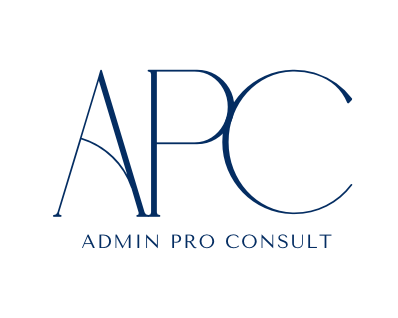Overview
Mental health stigma is a tough topic to tackle especially when its deeply rooted in generations of misunderstanding. When our client partnered with the World Health Organisation (WHO) to launch a campaign aimed at reducing stigma, they knew they had their work cut out for them.
What you will learn:
Learn how to develop actionable strategies for issues that aren’t easily measurable, yet require a long-term, focused approach.
Learn tips on engaging local communities and building trust to ensure the success of your initiatives from the ground up
Explore the key elements of an effective feedback loop, ensuring ongoing improvement and meaningful stakeholder engagement.
The Client partnered with the World Health Organization (WHO)—to launch a game-changing mental health initiative. Their goal? To boost access to mental health resources for 18–35-year-olds in key communities. But there was one catch: executing this vision across multiple communities without a hitch. Enter our talented APC member.
The Client needed a partner who could not only handle the program’s logistics but also master the art of high-level team coordination—while making sure the initiative hit its target: reducing mental health stigma, one community at a time. Spoiler alert: We delivered.
Stigma around mental health is, unfortunately, alive and well. And in the target communities, it wasn’t just about education—it was about shifting cultural perceptions and creating safe spaces for conversations that had never been had before.
It wasn’t just about education—it was about shifting cultural perceptions and creating safe spaces for conversations that had never been had before.

Breakdown of Challenges
Reducing mental health stigma
The initiative required coordination across multiple communities, each with its own socio economic environment and cultural considerations.
Client needed to efficiently allocate resources to maximize impact while staying within budget constraints.
Engaging local governments, healthcare providers, and community organizations was crucial to the initiative’s success, but required a well-organized approach.
Brand awareness and social media outreach was crucial for the initiative’s success.
The Approach
Strategic Planning and Coordination: Addressing mental health is a complex, unseen challenge and this required APC to break this down to digestible elements. Insert: make the invisible, visible. What did this look like? We knew that to reduce stigma, we had to get real with people—this wasn’t going to happen overnight, and it definitely wasn’t going to happen with a few quick fixes. We started by understanding what mental health meant to the communities we were working in. Each community had its own stories, its own struggles, and its own language when it came to mental health.
Rather than focusing on short term visible project goals like deadlines etc , we had to look at the bigger picture with a long term vision.
Step 1: Talk to the people! We rolled up our sleeves and got to work. We organized Community Needs Assessments where we sat down with community leaders, healthcare workers, and even local influencers. We didn’t just want to deliver a message; we wanted to co-create it with the very people we needed to reach.
Step 2: Partner with the right voices. Let’s be real—mental health is still a topic a lot of people don’t feel comfortable talking about. That’s why we sourced and worked with trusted voices within the community. From religious leaders to youth advocates, we found the people who were already respected and listened to. When they spoke about mental health, the communities were more likely to listen.This is also called resource groups and it allowed us to permeate the community and ask them questions that could let us know what was structuring the stigma in their communities
Step 3: Social Media That Speaks Volumes .Of course, it wasn’t all about in-person engagement. Mental health is an issue that affects everyone, and we needed to reach a broader audience too. So, we created a powerful social media strategy. But this wasn’t your average hashtag campaign. We curated stories from real people, sharing their experiences, struggles, and triumphs.
We also equipped their marketing team with evergreen content—because reducing stigma isn’t a one-time thing. We wanted our client to have materials that would continue to educate, engage, and inspire long after the campaign ended.The most important aspect was to establish trust in these target communities.
Further strategies used:
Engagement Strategy: Given the unique challenges of this project ,a typical stakeholder engagement strategy was not going to cut it . We were working in areas where mental health issues were historically stigmatized so gaining community support was crucial. To tackle this, a high velocity strategy was implemented. This looked like Getting Creative With Education .
One of our favorite moments in the campaign was the creation of mental health “myth-busting” workshops. These weren’t just boring PowerPoint presentations. Oh no, we made them interactive, engaging, and even a little bit fun whilst also taking into consideration the culture of these target communities. Attendees walked away not just with knowledge, but with tools to have conversations about mental health within their families, workplaces, and social circles.This strategy was critical in gaining buy-in and support at the grassroots level.
- Personalized Approach
- Innovative Solutions
- Engagement Strategy
Resource Optimization: All of this required substantial funding and resources, but thanks to the incredible community engagement and buy-in, the client was able to optimize their budget like never before. Communities actively stepped up, identifying cost-saving opportunities and smart resource reallocation, ensuring every dollar went where it could make the biggest impact.
Feedback Loop: We facilitated a feedback loop with local partners, enabling continuous improvement of the program based on on-the-ground insights and challenges. The most important aspect was to swiftly act on the feedback and this meant implementing strong analysis to quickly identify patterns, strengths and weaknesses without taking away from project achievement or basking to early in success.
Process Design & Documentation: We also made sure to implement strong process documentation i.e clear roles and descriptions for stakeholders focusing on the elasticity of their roles so that after project deadline, they can still carry on driving the message forward in their specific roles.
Global Coordination: We set up a central coordination hub to manage communication between the client, WHO, and local partners. This hub ensured that all activities were synchronized across the different target communities, reducing the risk of delays and miscommunication.
Meanwhile, we took on the less glamorous (but absolutely essential) tasks that freed up the team to stay innovative. This meant rolling up our sleeves and negotiating with suppliers and service providers to lock in the best deals, ensuring maximum value for every cent spent.
The Results
- A 25% Reduction in Stigma
Drumroll, please! By the end of the campaign, our client (and us) had something to celebrate: a 25% reduction in mental health stigma across the target communities. And while numbers are great, what mattered most to us was seeing people start to talk about mental health in an open, respectful, and supportive way.
Successful Rollout: The mental health initiative was successfully launched in 10 communities, reaching over 200 000 individuals aged between 18-35 with critical mental health resources and services.
Resource Efficiency: APC’s resource optimization strategies led to a 20% reduction in overall program costs, allowing the client to extend the initiative’s reach further than initially planned.
High Stakeholder Engagement: The initiative received strong support from local stakeholders, thanks to APC’s effective grass roots engagement and capacity-building efforts. This support was instrumental in the smooth implementation and sustainability of the program.
Positive Impact: The initiative saw a significant improvement in mental health outcomes in the target communities, with a 30% increase in access to mental health services and a 25% reduction in stigma associated with mental health issues. To this day, the progress continues.
We didn’t just meet the target; we helped lay the groundwork for ongoing change, one conversation at a time.
By partnering with APC, the client was able to efficiently manage and execute a complex,intangible mental health initiative in collaboration with the World Health Organization. APC’s strategic support, resource optimization, and stakeholder engagement were critical in ensuring the program’s success and long-term sustainability, ultimately making a positive impact on mental health in underserved communities.At APC, we don’t shy away from the hard stuff. Helping our client—and WHO—reduce mental health stigma wasn’t just about ticking off boxes. It was about changing the conversation in a way that would have a lasting impact. We didn’t just meet the target; we helped lay the groundwork for ongoing change, one conversation at a time.


